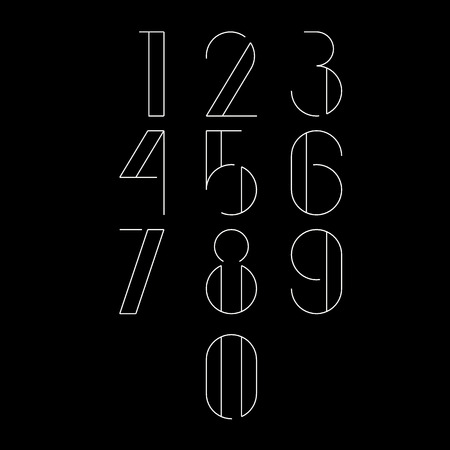Introduction: The Fascination with Aura Colours in British Culture
The idea of aura colours has long captured the imagination of people across the United Kingdom, weaving itself into the rich tapestry of British folklore, alternative spirituality, and contemporary wellness trends. From Victorian spiritualist parlours to modern holistic health fairs in cities like London and Manchester, aura reading has continued to intrigue and mystify. This fascination is rooted in both a historical curiosity about unseen forces and a distinctly British penchant for exploring the boundaries between science and the supernatural. Today, discussions about aura colours resonate with British audiences not only due to their cultural legacy but also because they provide a lens through which individuals seek meaning, self-understanding, and connection in an increasingly complex world. As we examine the science and skepticism behind aura colours, it becomes clear that this topic remains both relevant and divisive within the UK’s unique blend of tradition and rational inquiry.
2. The Science: What Do We Really Know About Auras?
The concept of auras—colourful energy fields said to surround living beings—has intrigued many in the UK, but what does science actually say about their existence? While popular culture often presents aura reading as a mystical or spiritual practice, scientific investigation takes a more sceptical and systematic approach, particularly within the British academic community.
Neurological Explanations
One leading theory suggests that experiences of seeing auras may be rooted in neurological phenomena. For instance, certain visual disturbances known as “migraine auras” can cause individuals to see colours or patterns around people or objects. British neurologists have explored conditions like synaesthesia—where sensory experiences overlap—and temporal lobe epilepsy, both of which can influence perception and could explain reports of aura-like visions.
Psychological Perspectives
From a psychological standpoint, some UK researchers propose that belief in auras may stem from cognitive biases or the power of suggestion. Studies conducted at British universities have demonstrated how expectation and priming can shape what people believe they perceive. This means that if someone expects to see an aura, their brain may interpret visual cues accordingly, especially in emotionally charged or suggestive settings.
Physiological Factors
Physiological explanations focus on how human vision processes light and colour. British optical scientists note that afterimages—the lingering impressions left by staring at bright colours—can create halo effects around people, especially against certain backgrounds or lighting conditions. This natural response may be misinterpreted as an ‘aura’ by those unaware of its biological origins.
Summary Table: Scientific Theories on Auras
| Theory | Description | Key UK Research/Findings |
|---|---|---|
| Neurological | Migraine auras, synaesthesia, and epilepsy influencing perception | Studies from University College London on visual processing disorders |
| Psychological | Cognitive biases and suggestibility impacting reported experiences | Research at University of Edinburgh’s Koestler Parapsychology Unit |
| Physiological | Optical afterimages and lighting effects causing coloured halos | Work by British Optical Association on visual phenomena |
Despite ongoing interest and public fascination with aura colours in the UK, mainstream science remains largely sceptical. Most British scientific bodies agree that current evidence supports natural explanations over supernatural ones. However, research continues into how cultural beliefs and perceptual quirks combine to shape our experiences of the world—even when it comes to something as enigmatic as auras.

3. Popular Beliefs and Practices in the UK
In the United Kingdom, interpretations of aura colours have become intertwined with both traditional spiritualist beliefs and modern commercial practices. The spectrum of opinions and activities ranges from dedicated spiritualist communities, such as those found in Brighton, to mainstream high-street ‘psychic’ services available throughout London. Within these circles, aura readings are often positioned as a tool for self-discovery, emotional healing, or guidance during times of uncertainty.
The Role of Spiritualist Communities
Spiritualist groups in towns like Brighton frequently host gatherings where individuals can learn about aura interpretation within a structured framework. Here, aura colours are associated with specific personality traits or emotional states—blue may symbolise calmness and clarity, while red might indicate vitality or emotional turbulence. These interpretations are often passed down through local traditions or workshops led by experienced practitioners.
Commercialisation on the High Street
In cities such as London, high-street psychics offer aura readings as part of a wider suite of metaphysical services. These commercial settings tend to blend elements of entertainment with claims of intuitive insight. The language used is carefully tailored to resonate with British sensibilities: sessions are described as “personal consultations,” and scepticism is acknowledged but subtly reframed as open-minded exploration.
A Cultural Perspective
Across the UK, discussion about aura colours frequently surfaces in lifestyle media, wellness blogs, and even social events like psychic fairs. While belief in the literal existence of auras varies widely, their use as metaphors for mood or interpersonal energy has seeped into popular conversation. This uniquely British approach balances curiosity with characteristic scepticism, reflecting a broader cultural tendency to question the extraordinary while remaining open to new experiences.
4. Media Representation and Public Perception
The portrayal of aura colours and aura reading in the British media is a nuanced topic, reflecting broader cultural attitudes towards alternative beliefs and practices. Media outlets across the UK adopt diverse stances, ranging from investigative scepticism to light-hearted curiosity, which collectively shape public perception.
Media Coverage: From Tabloids to Documentaries
British newspapers and television programmes frequently explore topics related to psychic phenomena, including aura reading. Mainstream tabloids often treat the subject with playful intrigue or outright scepticism, featuring “psychic” columns or reporting on celebrities who claim to see or interpret auras. On the other hand, documentaries aired by respected broadcasters such as the BBC tend to approach aura-related claims with scientific rigour, often consulting experts from psychology and neuroscience to provide counterpoints.
Comparison of Media Approaches
| Media Type | Typical Approach | Example Outlets/Programmes |
|---|---|---|
| Tabloids | Sensationalist, humorous or dismissive | The Sun, Daily Mirror |
| Quality Newspapers | Balanced, occasionally critical analysis | The Guardian, The Times |
| Television Documentaries | Investigative, often featuring expert interviews | BBC Horizon, Channel 4 Dispatches |
| Online Platforms & Social Media | User-driven content; mix of belief and scepticism | Mumsnet, Reddit UK, Facebook groups |
Public Response: Openness versus Scepticism
The British public’s response to aura colours mirrors the diversity found in media representation. Some individuals are open-minded, viewing aura reading as a harmless spiritual practice or an entertaining diversion. Others approach such claims with what is often termed “healthy British scepticism,” demanding empirical evidence and questioning extraordinary assertions. This dynamic is particularly evident in online discussions and live phone-ins on radio shows where both believers and critics voice their opinions.
Cultural Context of Scepticism in the UK
The tradition of critical inquiry has deep roots in British culture. Institutions like the Royal Society and popular science communicators such as Sir David Attenborough have fostered a climate where claims—especially those lacking clear scientific backing—are routinely scrutinised. Consequently, while there remains a niche for alternative beliefs like aura reading within British society, they are generally regarded with caution rather than widespread acceptance.
5. Critical Perspectives: British Scepticism and the Role of Evidence
British society has long prided itself on a tradition of rational inquiry and measured scepticism, particularly when it comes to paranormal phenomena such as aura colours. This cultural disposition is rooted in a rich history of scientific achievement and philosophical discourse, which continues to shape public attitudes towards extraordinary claims. The influence of British rationalism can be seen in the way both individuals and institutions approach topics that lack empirical grounding.
Unpacking the Influence of Rational Inquiry
The legacy of empiricism, championed by figures like Sir Francis Bacon and David Hume, underscores the expectation that any claim—especially those outside conventional science—must be subjected to rigorous scrutiny. Within this framework, assertions about auras and their associated colours are frequently met with demands for reproducible evidence and transparent methodology.
Prominent UK Sceptics: Champions of Critical Thought
Several high-profile sceptics have shaped public discourse around paranormal claims in the UK. Professor Richard Wiseman, a psychologist at the University of Hertfordshire, is renowned for his research into parapsychology and his systematic debunking of supernatural phenomena. Similarly, illusionist Derren Brown uses psychological principles to demonstrate how easily people can be misled by seemingly inexplicable experiences.
Sceptical Organisations: Structured Evaluation
The UK is also home to respected organisations dedicated to investigating extraordinary claims. The Association for Skeptical Enquiry (ASKE) and the Good Thinking Society are two notable examples. These groups provide platforms for critical discussion, offer resources for evaluating evidence, and actively challenge pseudoscientific practices through campaigns and public engagement.
The Role of Evidence in Public Discourse
This entrenched culture of scepticism ensures that claims about aura colours are not simply accepted at face value. Instead, there is a collective insistence on objective evidence before such phenomena gain wider acceptance. While some members of the public remain open to personal anecdotes or spiritual interpretations, the prevailing attitude—particularly among scientists, educators, and policymakers—is one that prioritises reason over belief.
In essence, British rationalism acts as a filter through which new ideas must pass. The ongoing dialogue between believers in aura colours and their sceptical counterparts highlights a broader societal commitment to evidence-based reasoning—a hallmark of UK intellectual life.
6. Conclusion: Navigating Belief, Science, and Scepticism
Reflecting on the place of aura colours in contemporary British culture reveals a fascinating interplay between personal belief, scientific scrutiny, and cultural scepticism. The UK, with its rich history of spiritual exploration and rational inquiry, serves as a microcosm for these ongoing dialogues. For some, aura colours provide a sense of connection and meaning, drawing from traditions that span both local folklore and global spiritual practices. For others, the lack of empirical evidence and scientific backing fuels doubt and healthy scepticism—a hallmark of British critical thinking.
Ultimately, the persistence of interest in aura colours speaks to the enduring human desire to find patterns and significance beyond what is immediately observable. As debates around authenticity and evidence continue, British society maintains a nuanced position: open to exploring alternative perspectives while firmly grounded in rational discourse. This duality ensures that conversations about aura colours remain vibrant, encouraging individuals to navigate their beliefs thoughtfully—balancing curiosity with critical appraisal in true British fashion.


